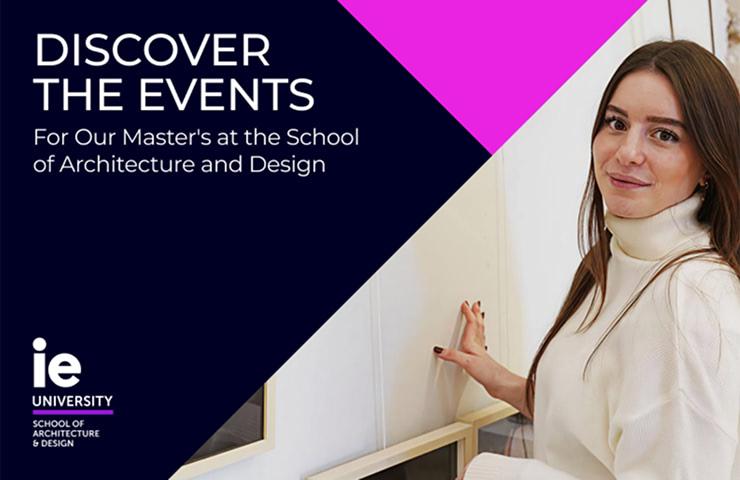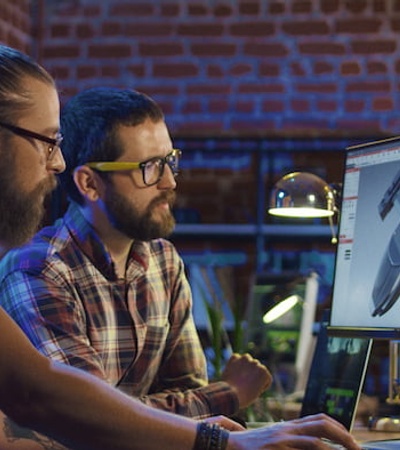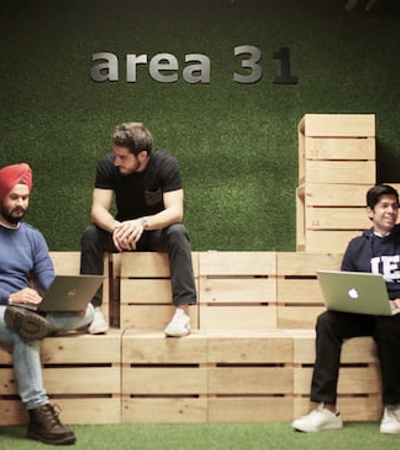
Master in Design for Immersive Experiences and XR
Master in Design for Immersive Experiences and XR
IMMERSE YOURSELF IN IMMERSIVE EXPERIENCIES AND XR DESIGN
IMMERSE YOURSELF IN IMMERSIVE EXPERIENCIES AND XR DESIGN
This intensive program immerses students in the fast-evolving world of immersive design and extended realities, providing a broad set of creative, technical, and conceptual skills to design meaningful, human-centered experiences across physical and digital spaces.
The curriculum is designed to equip students with practical, hands-on experience, allowing them to apply theoretical concepts in real-world scenarios.
Throughout the program, students engage in practical projects and collaborative ventures, culminating in a thesis project focused on pushing the boundaries of immersive experiences and XR design.

WANT TO KNOW MORE?
EXPLORE THE Master in Design for Immersive Experiences and XR (MDes) PROGRAM
EXPLORE THE Master in Design for Immersive Experiences and XR (MDes) PROGRAM
The study plan offers a comprehensive journey through immersive design, combining technology, storytelling, and spatial experience. Students begin by building a solid foundation in extended realities (XR), physical-digital prototyping, and human-computer interaction. As the program advances, they explore sound and motion design, interactive narratives, worldbuilding, and transformative play.
In the final term, students deepen their expertise in areas like real-time graphics, embodied spatial media, UX, AI, and gamification. This progression is structured around three Design Studios, where students apply their learning through hands-on projects that prepare them to develop a unique, future-facing thesis and a professional portfolio.
- The program
- Periods
- Start-up Bootcamp
- First term
- Second Term
- Third TERM
- The program
- Periods
*Please note that our program content is continually updated to remain in sync with market demands. Therefore, we advise you that the content is subject to change and it can be dependent on student demand.

OFFICIAL DEGREE
OFFICIAL DEGREE
Students must fulfill the following requirements to be able to request the issuance of the Official University Degree upon completion of the Master Program. If educational prerequisites are not provided and/or if the requirements are not met on time, the student will not be able to request the official university degree as issued by the Spanish government. In this case, the studies will not be official under Spanish educational regulations.

THE ULTIMATE GUIDE
THE ULTIMATE GUIDE
All you need to know about our School of Architecture and Design events
THREE KEY AREAS AT IE SCHOOL OF ARCHITECTURE AND DESIGN
THREE KEY AREAS AT IE SCHOOL OF ARCHITECTURE AND DESIGN
Frequently Asked Questions
Frequently Asked Questions
What courses are included in the MDes curriculum?
Modules cover Human-Computer Interaction, XR, Creative Coding, Tangible Interfaces, Worldbuilding, Interactive Narratives, Sound Design, Creative AI, Gamification, and a Thesis Project.
Does the program cover extended reality technologies?
Yes. XR is central to the curriculum, including AR, VR, and mixed reality.
Are there practical projects in immersive experience design?
Absolutely. Every term is studio-based and project-driven, leading to a portfolio-defining final project.
How is the study plan structured?
- Term 1: Hybrid Experience (XR, coding, physical computing).
- Term 2: Virtual Narratives (storytelling, play, worldbuilding, sound).
- Term 3: Design Futures (thesis project, advanced tools like AI, real-time graphics, immersive experience).
Can I specialize in interaction design or XR?
Yes. While you gain broad training, your thesis project allows you to specialize in XR, interaction design, or narrative design.


